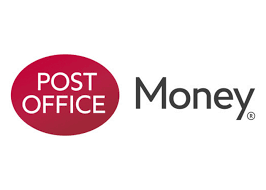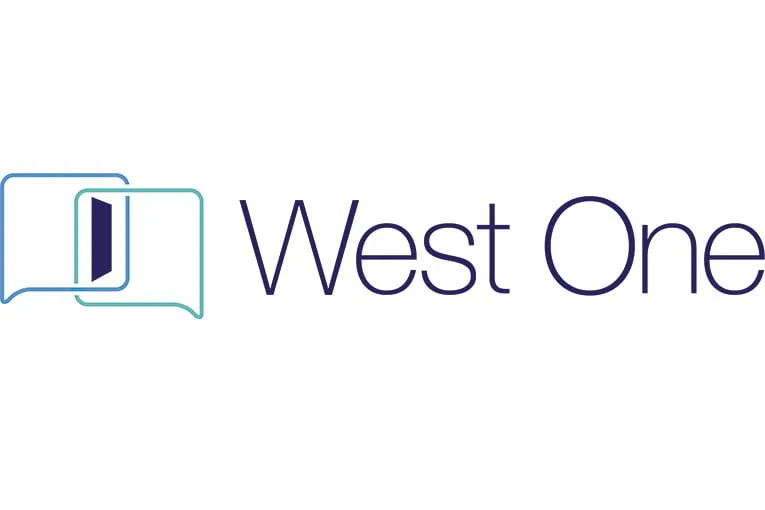Remortgaging V Product Transfer – Which Is Right for You?
If your current mortgage deal is coming to an end, you’ll likely be presented with two main options, remortgaging or opting for a product transfer. A mortgage is often the biggest financial commitment most people will make, so choosing the right option is crucial. While both allow you to secure a new interest rate, they work differently and can suit different needs depending on your financial goals.
Introduction to Mortgage Options
When your current mortgage deal is coming to an end, it’s important to understand the different mortgage options available to you. The two most common choices are a mortgage product transfer and remortgaging.
A mortgage product transfer allows you to switch to a new mortgage product with the same lender, often making the process quick and straightforward. On the other hand, remortgaging involves moving your mortgage to a new lender, which can open up a wider range of deals and potentially more competitive rates.
Each option has its own advantages and is suited to different financial circumstances. By understanding how a product transfer compares to remortgaging, you can make an informed decision that aligns with your goals.
Whether that’s securing a better deal, accessing more flexible mortgage terms, or simply keeping your monthly payments manageable. Exploring your mortgage options thoroughly will help ensure you choose the right deal for your needs.
What is a Remortgage?
Remortgaging is the process of changing lenders or moving to a different lender, often to take advantage of better deals, lower interest rates, or potential savings. Remortgaging can also allow you to borrow more money or raise extra capital beyond your original loan amount.
You can choose to remortgage for the same amount as your current mortgage or increase the mortgage amount, depending on your needs. If your property value has increased or interest rates are favorable, remortgaging can help you secure lower interest rates and maximise potential savings.
Keep in mind that remortgaging may involve legal fees and conveyancer fees, which should be considered when comparing options. Seeking expert guidance is important to help you make informed decisions, especially in the context of rising interest rates.
Key Features:
- Full market access choose from hundreds of lenders.
- Allows you to borrow more or adjust your mortgage term.
- Involves a full application process including credit checks and valuations.
- May include legal fees, arrangement fees, and conveyancer fees.
What is a Product Transfer?
A product transfer means switching to a new deal with your current provider or existing lender when your existing mortgage product ends.
Product transfer mortgages allow you to switch to a new mortgage product, such as a fixed, tracker, or discounted rate mortgage, with your existing lender. With product transfer mortgages, you typically keep the same amount as your current mortgage unless you apply for a further advance.
Legal fees are usually not required for product transfer mortgages. Some lenders also offer preferential rates to existing customers who choose a product transfer mortgage.
Key Features:
- Stay with the same lender.
- Fast and straightforward often no legal work or valuations.
- No credit checks or affordability assessments in many cases.
- Usually no early repayment charges or exit fees.
Mortgage Product Transfer Process
The process of a mortgage product transfer is typically quicker and more straightforward than switching to a new lender. Since you’re staying with the same lender, there’s usually less paperwork involved, and you may not need to undergo a new credit check or property valuation.
To start, you’ll review your existing lender’s range of mortgage products, which may include fixed rate, tracker, or discounted rate mortgages. Once you select a new deal, your lender will check your eligibility and affordability for the chosen product.
If approved, you can move directly onto the new mortgage product, often with minimal disruption. Because the process is typically quicker and involves fewer steps than remortgaging, many borrowers find product transfers to be a convenient way to secure a new deal.
However, it’s still important to compare your current lender’s offers with other deals on the market to ensure you’re not missing out on a better rate or more flexible mortgage terms.
Fixed Rate Period Considerations
As you approach the end of your fixed rate period, it’s crucial to plan ahead to avoid being moved onto your lender’s standard variable rate, which often comes with a higher interest rate and increased monthly payments.
Both product transfers and remortgaging can help you secure a better deal before your fixed rate expires. Ideally, you should start exploring your options 3-6 months before the end of your fixed rate period to allow enough time for the application process and to compare deals.
Consulting with an experienced mortgage advisor can help you assess your financial circumstances and identify the best solution, whether that’s a product transfer with your current lender or a remortgage with a new provider. Taking action early ensures you have access to the most competitive rates and can make a smooth transition to your next mortgage deal.
Remortgage vs Product Transfer – Side-by-Side Comparison
| Feature | Product Transfer | Remortgage |
|---|---|---|
| Lender | Stay with current provider or existing lender | Switching lenders, changing lenders, or moving to a different lender |
| Application process | Quick, minimal paperwork | Full application process |
| Valuation required | Often not needed | Usually required |
| Credit/affordability checks | Not usually required | Always required |
| Fees | Low or no fees; product transfer mortgages usually do not include legal fees or conveyancer fees | May include legal fees, conveyancer fees, valuation, and lender fees |
| Range of products | Limited to existing lender’s range | Whole-of-market choice, including discounted rate mortgages |
| Access to additional funds | Typically keeps the loan amount the same; limited via further advance | Flexible equity release possible; can raise extra capital or borrow more money |
| Completion time | 1–2 weeks | 4–8 weeks; may take a longer period |
Note: When considering product transfer vs remortgaging, weigh your options carefully. Remortgaging with a different lender can offer better deals, lower interest rates, and potential savings, especially if interest rates are favorable or if you want to raise extra capital.
Benefits of Product Transfers
- Speed & Simplicity: Often completed within days.
- Cost-Effective: No legal, valuation, or arrangement fees in most cases.
- Low Risk: No affordability checks or property revaluation.
- Retention Deals: Some lenders offer competitive rates to loyal customers.
Benefits of Remortgaging
- Market Choice: Compare rates from a wide range of lenders.
- Better Rates: Access potentially more competitive deals.
- Flexibility: Change your mortgage term, type (fixed, tracker, etc.), or amount.
- Raise Capital: Use equity for home improvements, debt consolidation, or major purchases.
When to Choose Which?
Choose a Product Transfer if:
- You’re happy with your current lender.
- You don’t need to borrow more.
- You want a quick and easy process.
- You’re concerned about affordability or credit checks.
Choose a Remortgage if:
- You want to borrow additional funds.
- Your current lender’s deals aren’t competitive.
- You’re looking to change your mortgage structure.
- You’re willing to go through a longer application for long-term savings.
High Street Lenders – Common Product Transfer Providers
| Lender | Known For |
|---|---|
| Barclays | Competitive switcher deals for customers |
| HSBC | Low LTV product transfers |
| Nationwide | Rewarding existing customers with lower rates |
| Santander | Quick and efficient transfer process |
| Halifax | Popular with home movers and switchers |
| TSB | Consistent existing customer pricing |
Specialist Mortgage Lenders – Ideal for Remortgaging with Complex Needs
| Lender | Speciality |
|---|---|
| Kent Reliance | Self-employed, complex income cases |
| Shawbrook Bank | Buy-to-let and commercial properties |
| Aldermore | Adverse credit, new build, and contractors |
| Precise Mortgages | Limited company landlords, complex BTL |
| Bluestone Mortgages | Credit-impaired and specialist situations |
How We Can Help
Our expert mortgage advisors will guide you through whether a remortgage or product transfer is right for you. We compare products from the entire mortgage market, including specialist and high street lenders, ensuring you get a tailored solution that suits your financial goals.
Speak to a Specialist Mortgage Broker Today
Need help finding the right remortgage for debt consolidation?
Our team of experienced, whole-of-market mortgage brokers can:
- Assess your debt-to-income ratio
- Compare lenders that accept your circumstances
- Help reduce monthly payments and simplify your finances
Call us on 01332 470400 or complete our online enquiry form to request a free callback and mortgage quote.
What our customers say
Marlon
25 Apr 2025
Showing our favourite reviews

Always attentive, helpful and efficient
Jonathan, 27 Jan 2025

Best Mortgage Broker in the UK!
Liam, 26 Nov 2024

Ben was really helpful in helping me…
George, 28 Aug 2024
FAQs
What’s the difference between a remortgage and a product transfer?
A remortgage involves switching your mortgage to a new lender, often to access better rates or borrow more. A product transfer, on the other hand, is when you stay with your current lender but switch to a new mortgage deal. Remortgaging offers wider product choice but may involve more paperwork and fees, while product transfers are usually quicker and more straightforward.
Is it cheaper to remortgage or do a product transfer?
Product transfers are typically cheaper upfront, as they often have no legal, valuation, or arrangement fees. However, a remortgage might offer lower interest rates or more flexible terms, potentially saving you more money over the long term—even if the upfront costs are higher. Always compare both options before deciding.
Do I need a solicitor for a product transfer?
No. Most product transfers do not require legal work or a solicitor. Since you’re not changing lenders, the process is simpler and faster than a remortgage, which usually requires a solicitor or conveyancer to handle the legal side of switching lenders.
Can I borrow more with a product transfer?
Generally, no. A product transfer typically keeps your loan amount the same, unless you apply for a further advance with your existing lender. If you want to borrow additional funds—e.g., for home improvements or debt consolidation—a remortgage is usually a better option.
When should I choose a remortgage over a product transfer?
Choose a remortgage if:
You want access to better rates across the market
You need to borrow more money
Your current lender’s offers aren’t competitive
You want to change your mortgage structure or term
Choose a product transfer if:
You’re happy with your current lender
You want a quick, low-hassle process
You don’t need to borrow more
You want to avoid credit or affordability checks
Ready to Take the First Step?
Whether you’re a first-time buyer, remortgaging, or moving home, bad credit doesn’t have to hold you back.
Understanding credit scoring can help you prepare for a mortgage application. You can speak to one of our specialist mortgage brokers who would be able to guide you through the process. They will advise if there is a lender available and the maximum loan amount based on your circumstances. We are a whole of market mortgage brokerage with access to all lenders.































